

/en/word2010/working-with-headers-and-footers/content/

Let's say someone asks you to proofread a report. If you have a hard copy of the report, you might use a red pen to cross out sentences, mark misspellings, or add comments in the margins. However, you could also do all of these things in Word using the Track Changes and Comments features.
When you've finished reviewing the document, the other person can choose to automatically accept all of your changes, or decide whether to accept or reject each change one by one.
In this lesson, you'll learn how to track changes, add comments, and compare two versions of a document.
When you need to collaborate on the content of a document or if you need someone to proofread your document, Word's Track Changes and Comments features make it easier for you to collaborate with others.
When you turn on the Track Changes option, all changes you make to the document show up as colored markups. If you delete some text, it won't disappear but instead will have a visible strike through it. If you add text, it will be underlined. This allows another person to see which changes have been made before making the changes permanent.
 A document with tracked changes
A document with tracked changesThe color of the markups will vary depending on who is reviewing the document, so if there are multiple reviewers you'll be able to tell at a glance who made each change.
 The Track Changes command
The Track Changes command Tracked changes
Tracked changesSometimes instead of changing something, you may want to make a comment about part of the document. Comments show up in balloons in the right margin and can be read by the original author or by any other reviewers.
 The New Comment command
The New Comment command A comment
A comment A selected comment
A selected comment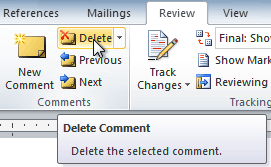 Deleting a comment
Deleting a comment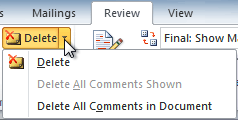 The Delete drop-down arrow
The Delete drop-down arrowTracked changes are really just suggested changes. To become permanent, they have to be accepted. On the other hand, the original author may disagree with some of the tracked changes and choose to reject them.
 Selecting a change
Selecting a change The Accept and Reject commands
The Accept and Reject commands After accepting a change
After accepting a changeFor some tracked changes, you can reject the changes by deleting them as if they were normal text. For example, if a reviewer adds a word to a sentence, you can just delete the word.
 Accepting all changes
Accepting all changes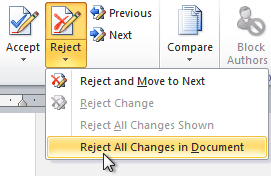 Rejecting all changes
Rejecting all changesAccepting or rejecting all changes does not affect comments, so if you want to delete them you'll have to do so separately.
If there are a lot of tracked changes in a document, they can become distracting if you're trying to read through the document. There are a few settings you can use to hide the markups or change how they appear.
 The Display for Review Command
The Display for Review Command Displaying the Final version (markups hidden)
Displaying the Final version (markups hidden)Setting Display for Review to Final is not the same as accepting all changes. You will still need to accept or reject the changes before sending the final version of your document.
By default, most revisions show up inline, meaning the text itself is marked. You can choose to show the revisions in balloons, which moves many of the revisions (such as deletions) to balloons in the right margin. This can make the document easier to read because there are fewer inline markups. Balloons also give you more detailed information about some markups.
 Balloons
Balloons Show Revisions in Balloons.
Show Revisions in Balloons. Showing revisions in balloons
Showing revisions in balloons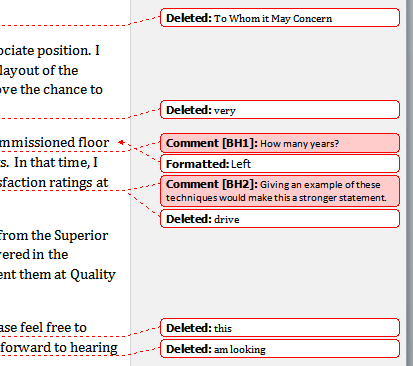 Revisions in the right margin
Revisions in the right marginTo go back to inline markups, you can select either Show All Revisions Inline or Show Only Comments and Formatting in Balloons.
If you edit a document without tracking changes, it's still possible to use reviewing features such as Accept and Reject. You can do this by comparing two versions of the document. All you need is the original document and the revised document, and they must have different file names.
 The Compare command
The Compare command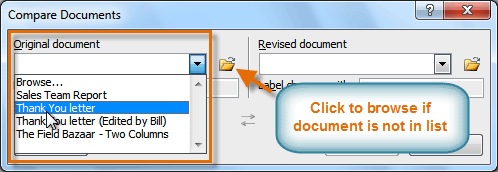 Choosing the Original document
Choosing the Original document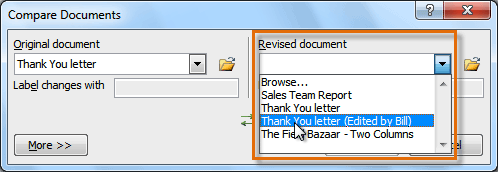 Choosing the Revised document
Choosing the Revised documentAt this point, Word compares the two documents to determine which changes were made, and it creates a new document that you can save if you want. The changes show up as colored markups, just like the ones that appear when using Track Changes. You can then use the Accept and Reject commands to finalize the document.
 Comparing two documents
Comparing two documentsTo the right of the new document, there's a pane that displays the original and revised documents that you can use for reference (although you can't edit them). If you don't see the pane on the right, click Compare Show Source Documents
Show Source Documents Show Both.
Show Both.
If there are any comments or tracked changes in your document, you should remove them before sending it to anyone you're not collaborating with. Comments and tracked changes can reveal confidential information that could lead to embarrassment or make you or your company appear unprofessional—or worse.
Once you've removed all of the comments and tracked changes, it's a good idea to double-check your document using the Document Inspector. The Document Inspector can tell you if there is any hidden data in your document that you may need to remove. It looks for data in many different places—not just comments and tracked changes.
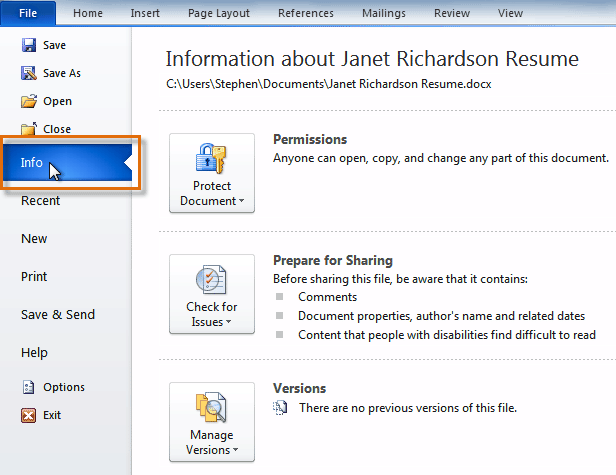 Selecting Info
Selecting Info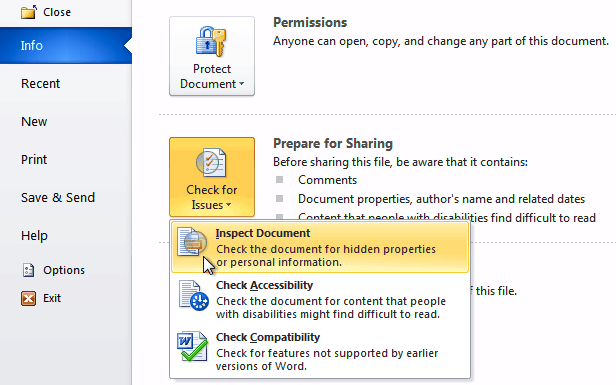 Clicking Inspect Document
Clicking Inspect Document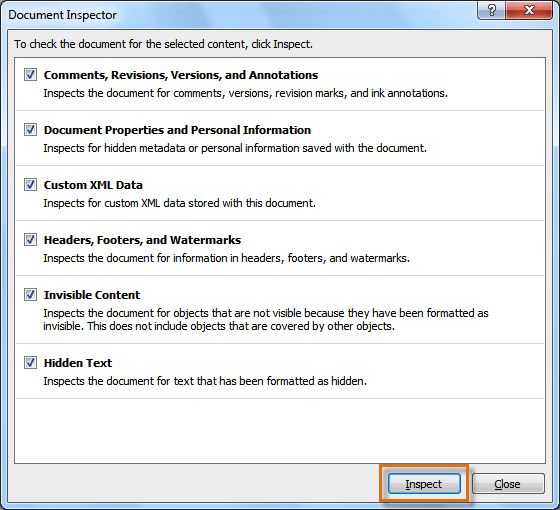 Starting the inspection
Starting the inspection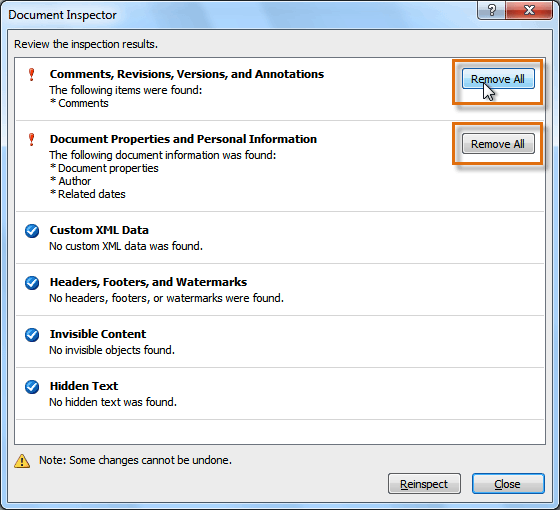 Removing possibly sensitive data
Removing possibly sensitive data
/en/word2010/working-with-tables/content/